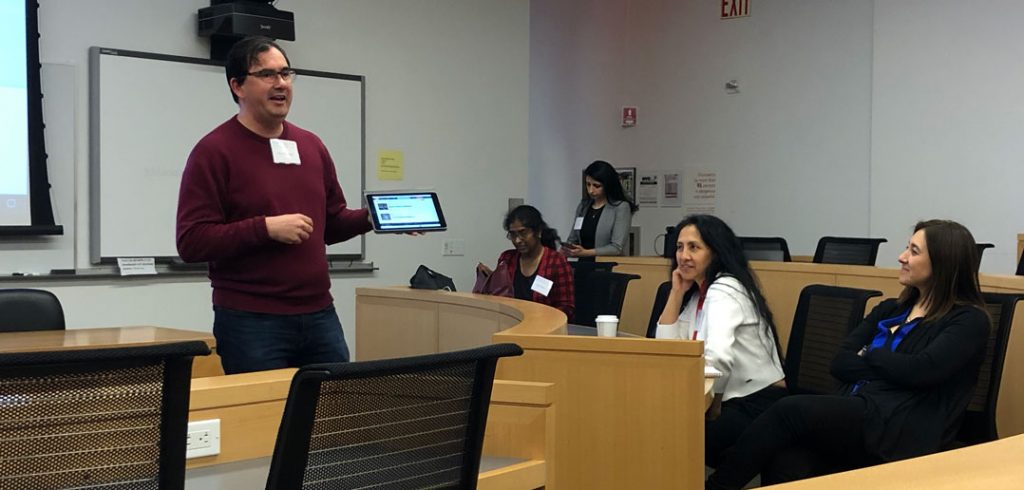Student Podcasting
Nicholas Paul, Ph.D., an associate professor of history, teaches in Fordham’s Medieval Studies program, one of the biggest programs of its kind in the world. His presentation, Podcasting and the History Graduate Classroom, offered ideas on how to make dense topics easier to digest.
While teaching a course on the Crusader states, which Paul described as “an arcane subject, even within the field of medieval history,” he wanted his students to have a way of interpreting these esoteric and difficult ideas to a larger audience.
“My students were gaining knowledge about something that no one else knows about. So the idea was to get comfortable with communicating these difficult ideas… How are we going to be able to explain the skills and the knowledge that this person has gained in some sort of wider context?”
As a solution, Paul came up with the podcasting idea. He tasked his students with creating a seven-to-10 minute podcast, encouraging them to listen to other popular history podcasts to get a feel of what to do. For the assignment, they were required to gather the technology and equipment they needed, write a script, record the podcast, and work with Paul on editing their audio until they were satisfied with the final products, which were then uploaded to SoundCloud and linked to their website, The Crusader States, for anyone to listen to.
Students were graded on how effectively they organized the information in a comprehensible way, which “was challenging to some people, especially people who were in Ph.D. programs, who have identified themselves as an intellectual. And they’re like, ‘I deliberately can’t speak to other people,’ so we break that down and say ‘you have to try.’”
The podcasts received encouraging responses from Paul’s Twitter followers. Listeners bantered back and forth, gave feedback, wrote comments, and even started to look forward to new episodes after the year ended, which Paul jokingly called “season 2” of the podcast series.
Using Polling Techniques for Instant Feedback
Usha Sankar, Ph.D., a lecturer in the biological sciences department who teaches courses like human physiology, was also looking for ways to keep students engaged. She has found polling techniques to be a useful strategy.

Using polling software, Sankar incorporated an interactive strategy into her lectures to keep her classroom energy as dynamic as possible.
There are many polling technologies out there—Sankar uses Poll Everywhere, a live interactive audience participation website used to gather responses. It can be used to create pop quizzes, polls, teaching games, and more. Students access their personal account page on their phones, answer questions directly, and see responses in real time.
Sankar has hosted a medley of quizzes, games, and competitions on her own Poll Everywhere page to test students about what they’ve learned during the lecture. The interactive aspect of the polling strategy allows her students to feel more engaged than if they were just listening to a lecture.
“Polling is a great way to gauge student engagement and understanding of concepts. The best polling methods are those that are intuitive, easy to access, cheap, encourage full participation, and provide detailed reports and feedback,” she said.
She’s also “constantly looking to improve my teaching,” she said, and polling is a great way to get feedback.
Keeping Students Engaged with Creative Pedagogy
Jane Suda, head of reference and information services in the Walsh Library on the Rose Hill campus, was impressed with the presentations she sat in on during the day, and their emphasis on “how you can use different technologies to make important learning points to the students and also make a creative classroom environment that is not your standard ‘write a paper, take a test’ environment,’” she said.
“In essence it’s like taking the classroom, breaking down the walls, and saying OK, now we’re gonna take what you’re learning in this one class, and throw it out into the public, and so we’re all polling, we’re podcasting, we’re creating websites, and so it’s not just what am I doing for the teacher, but what am I doing for the world, and that’s really dynamic. It changes what the classroom is all about.”


